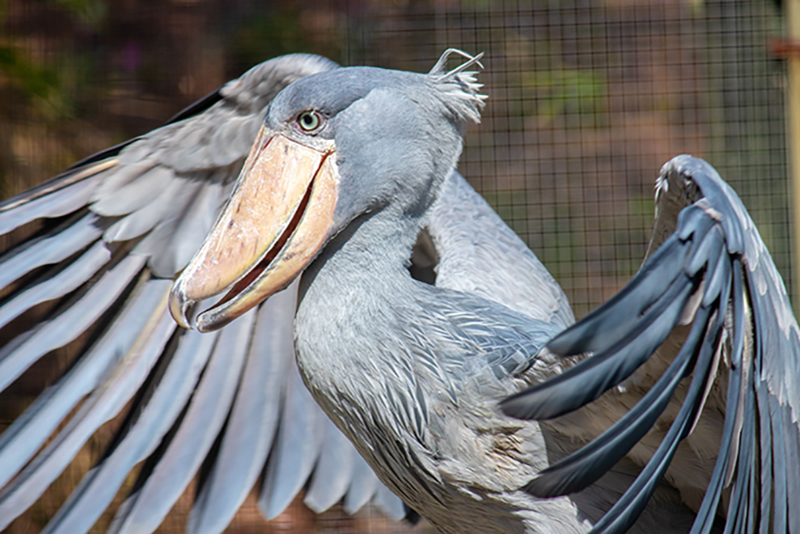Shoebill storks are never found in groups. Only if food is in short supply will they be seen foraging near each other. Even breeding pairs will forage at opposite sides of their territory. Shoebills are non-migratory, but will make small movements between nesting and feeding zones. For flight, they will soar on thermals above their territory.
They are silent for the most part but will “bill-clatter” to each other, usually as a greeting between pairs. Adults may also make “mooing” noises and chicks will make hiccupping noises to beg for food. To hunt, they will usually use shallow waters with tall vegetation for camouflage. They will either stand and wait to ambush prey, or they will walk slowly to spot prey items.
Fun Facts:
- Shoebills participate in a behavior called “egg-watering,” where a parent will get a bill full of water or wet grass, pour it over the nest, and roll the eggs around it to keep them cool.
- Shoebills are known for standing motionless for long periods of time waiting on prey, and will even eat baby crocodiles.
- Shoebills are often found in areas where the water is poorly oxygenated because the fish will have to surface for air more, ultimately making hunting easier.
- Despite being called ‘storks’, Shoebills are more closely related to pelicans and Hamerkops than to other storks. The stork part of their name is based on their similar appearance to storks, rather than their genetic lineage.
Conservation Threats:
Vulnerable








![tampa-640x300-54[29]-noarrow](jpg/tampa-640x300-5429-noarrow.jpg)


